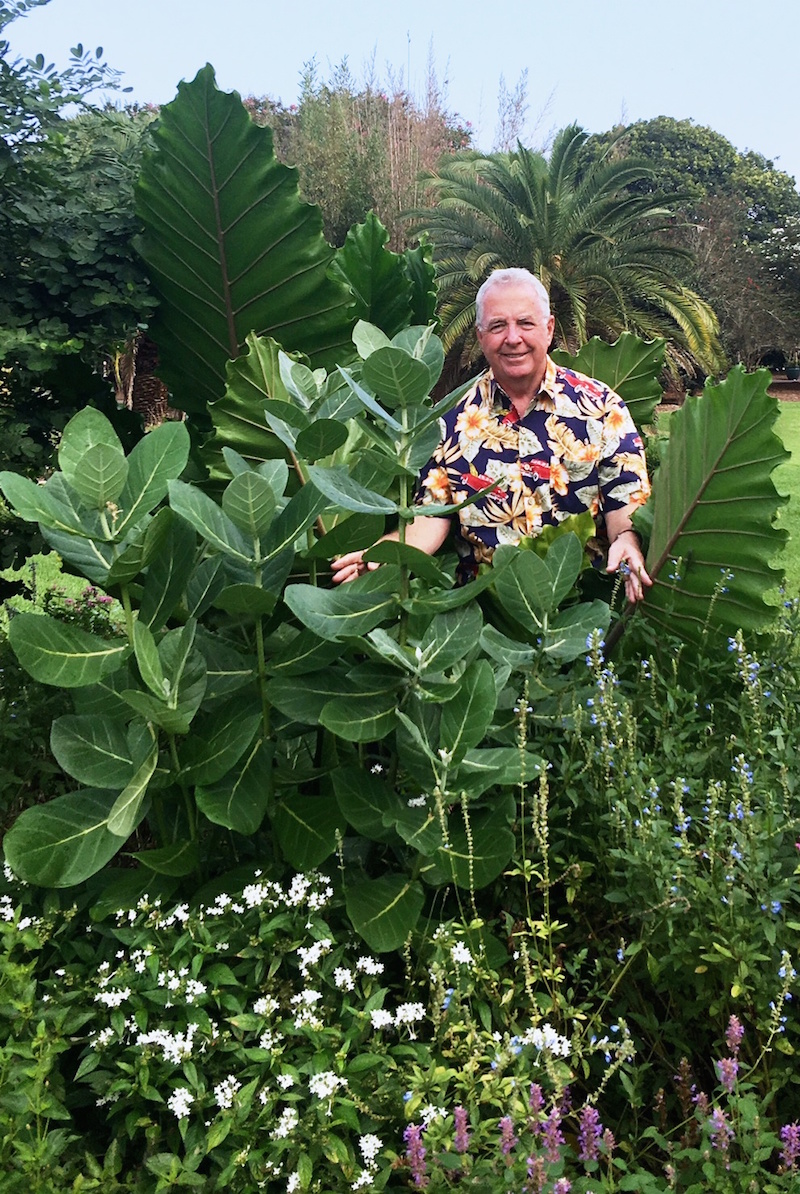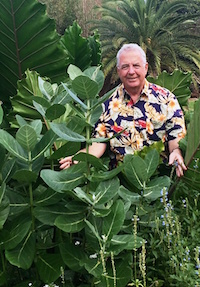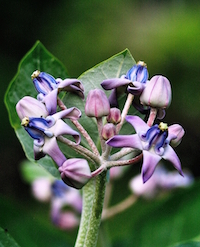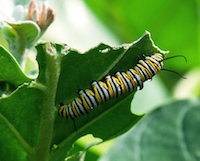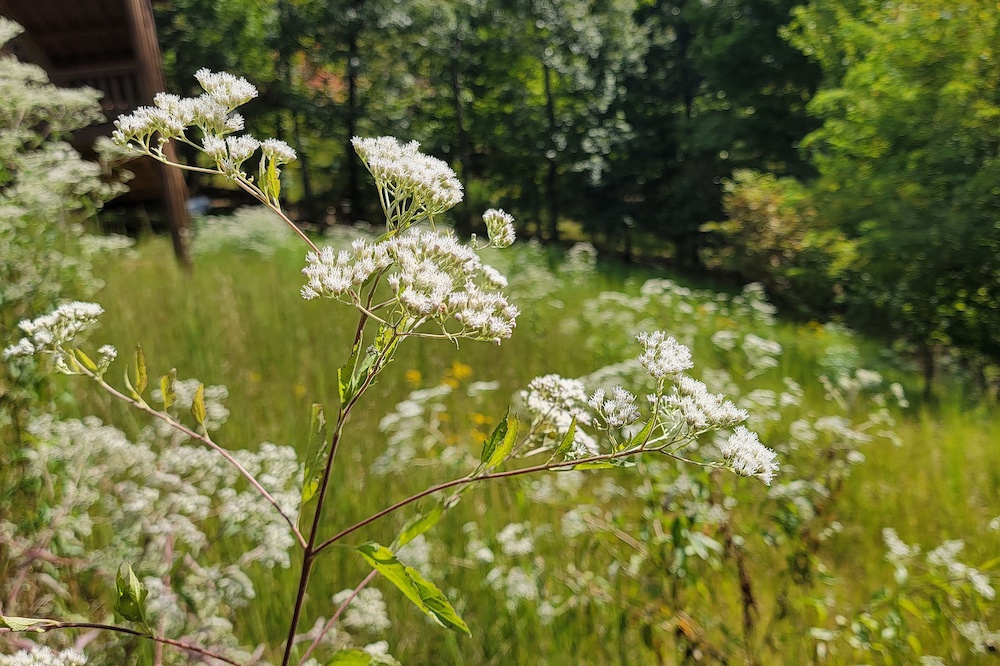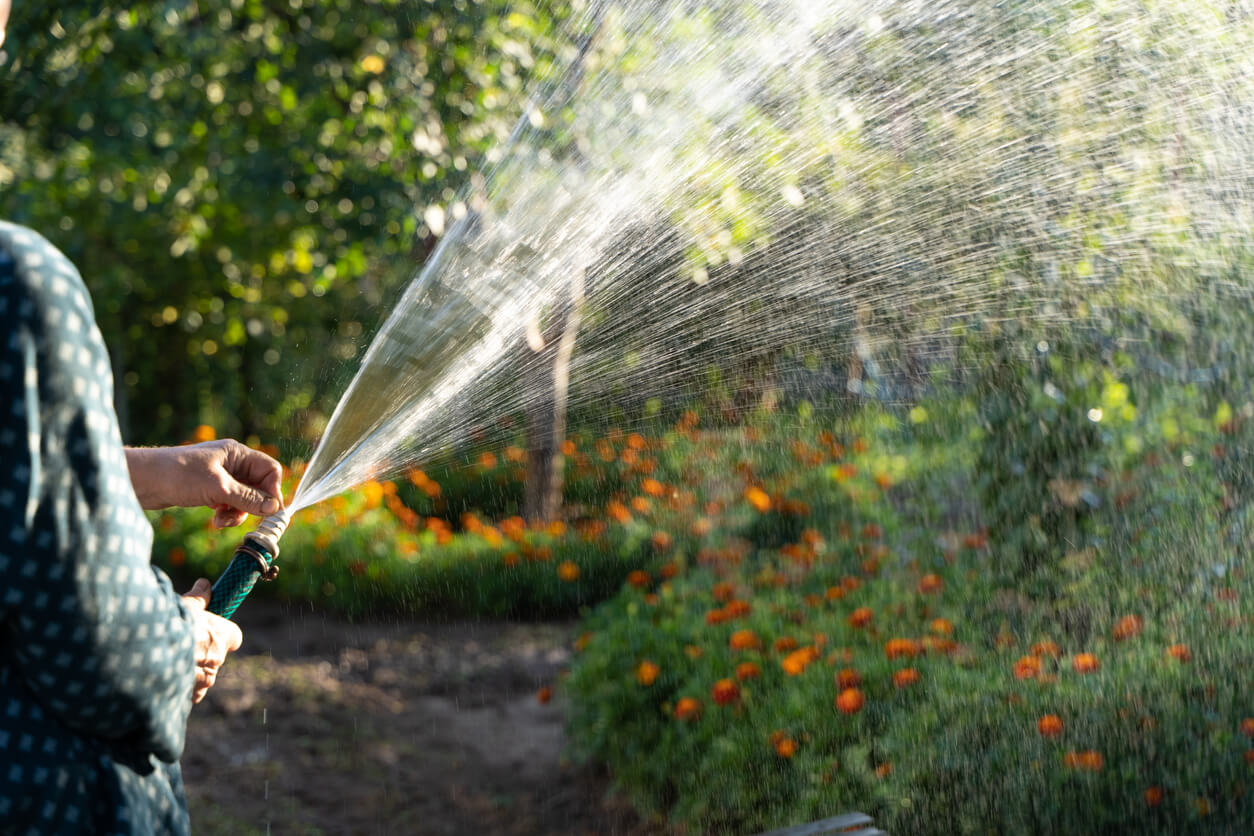The phone rang, and I heard a gardener in tearful hysteria pleading for me to take her monarch caterpillars because she was totally out of milkweed leaves. At the time, we had quite a few plants representing several species, both native and imports. I was shocked, however, when she brought me a box with 100-plus caterpillars, and I went out to the garden and started dispersing them — one for each small plant and two or three for each large plant. Deep down, I knew full well we would soon be in trouble. I would run out of milkweed leaves, too.
In the midst of that butterfly dilemma, I remember thinking that we need larger milkweeds. As winter rolled toward spring, I started trying to buy more native milkweeds. Over 20 species are native to Georgia, but finding them for sale can be a daunting task. I did find a wholesale nursery in south Florida that sold a plant they called the “giant milkweed” or “crown flower,” Calotropis gigantea.
We’ve been growing giant milkweeds for three years in Savannah, Georgia, and I am pleasantly surprised. This year our giant milkweeds are 4 to 5 feet tall with leaves as large as those on a rubber tree. They provide many food opportunities for monarch caterpillars and their cousins, the queen and soldier caterpillars, which always seem to go unmentioned in the butterfly world. They, too, must have milkweed to exist.
The giant milkweed is native to India, Malaysia, Indonesia and China. I questioned whether native butterflies would lay eggs on the giant milkweed and whether the caterpillars would feed on such a large import, but the answer is yes on both counts. So, would the monarchs and queens rather feed on a native milkweed species? You would think so and, for that reason, we have those too. I have hundreds of plugs of native species coming over the next few months.
I wonder if a plant, maybe just one, of this huge, 5-foot-tall, 5-foot-wide giant milkweed, with silver foliage and incredibly showy blue and lavender flowers, might just have a place in the garden. The monarch and queen butterflies will use this import as a host plant, too. There is enough leaf space to feed all who want to partake. I doubt there will be any more tearful reports of lack of milkweed leaves.
The giant milkweed is cold hardy in zones 11 and 12 and, in its native region, can grow 8 feet wide and 15 feet tall. In Savannah, we have had them return slowly from the previous two winters, but we are always hedging our bets, so to speak, and rooting cuttings, too. This means that, more than likely, you will be growing yours as an annual. If so, you can easily root cuttings, holding them over for spring, or grow them in a portable container that you can protect from freezing weather.
At the Coastal Georgia Botanical Garden at the Historic Bamboo Farm in Savannah, we are using the giant milkweed in our pollinator beds with a host of other nectar and larval plants. We dress it up with a little tropical foliage. Butterflies and hummingbirds are always around. Though we are a little wind-whipped after Hurricane Irma, the butterflies are already showing they, too, weathered the storm.
Finding native milkweed plants for sale is still like finding buried treasure. I assure you, we are all working on it and not just in Georgia. As we do, the Coastal Botanical Gardens will be evaluating the giant milkweed, for landscape performance and food for the monarchs, too.
Follow me on Twitter: @CGBGgardenguru.

